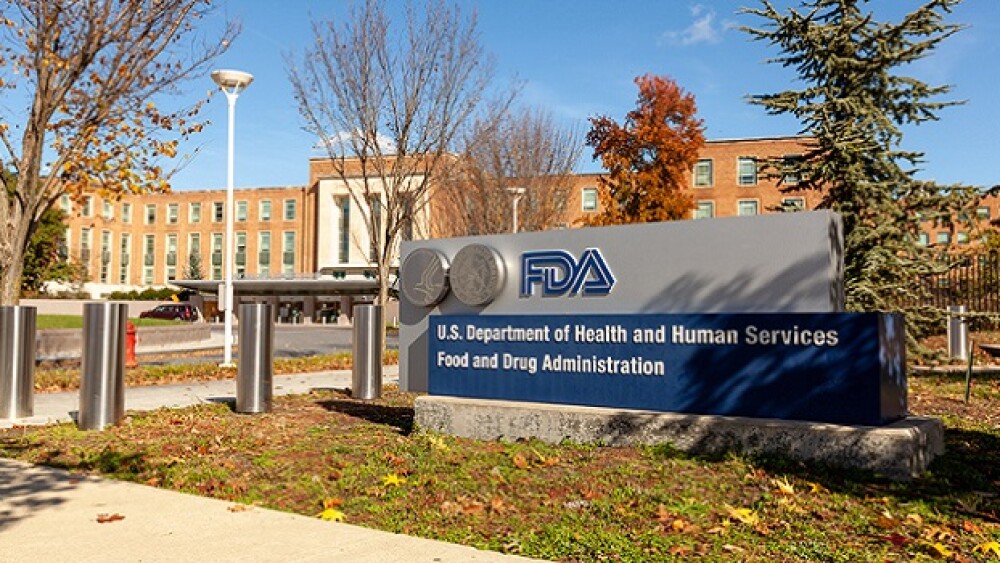After a long and challenging journey for its stem cell therapy NurOwn, BrainStorm Cell Therapeutics has aligned with the FDA on the parameters of a Phase IIIb ALS trial that is expected to begin by the end of 2024.
It’s been a difficult year for the amyotrophic lateral sclerosis community. The hits have come hard and fast, with the withdrawal of Amylyx’s Relvyrio from the market and the mid-stage failure of Sanofi and Denali Therapeutics’ candidate. Against this backdrop, BrainStorm Cell Therapeutics is taking one more shot at shoring up enough data to get its cell therapy NurOwn across the finish line.
BrainStorm—and NurOwn, in particular—have been the subject of much debate in the ALS space over the past four years. Some patients have sung the therapy’s praises, while the FDA has consistently denied or discouraged the company from further development efforts.
In September 2023, an FDA advisory committee voted 17-1 against approving NurOwn, saying there was not substantial evidence to support its efficacy as a treatment for mild-to-moderate ALS. Instead of moving ahead to the December PDUFA date, BrainStorm withdrew its Biologics License Application and announced it would conduct a Phase IIIb trial.
Nicole Cimbura, co-lead of the Legislative Affairs Team at I AM ALS, told BioSpace she was “devastated” by the verdict. Cimbura said she saw the benefits of NurOwn in her husband, Mike, who received the therapy in a Phase II trial. After treatment with NurOwn, Mike was able to raise his arms above his head, stand without assistance and hold a pen in his left hand, all things he’d previously been unable to do, Cimbura said; his breathing was also stronger.
“Is it perfect? Is it a cure? No,” she said. “But it is better than anything else we have at the moment.”
Chaim Lebovits, president and CEO at BrainStorm, said the company is focused on the future. “We would have enjoyed if FDA would have decided to provide some kind of approval, just like they did in other products, similar products, but when that didn’t happen, we just chose to go forward and make this happen.”
The Data Package
NurOwn is an autologous stem cell therapy that involves taking out and purifying mesenchymal stem cells from bone marrow and multiplying them in combination with the NurOwn substance that makes the cells produce neurotrophic factors. In November 2020, BrainStorm’s first Phase III trial of NurOwn failed to meet statistical significance in the primary efficacy endpoint. The 34.7% response rate was only slightly better than the unusually high 27.7% placebo response. However, in a pre-specified subgroup of patients with early-stage disease, the difference was much larger, with 34.6% of NurOwn recipients having a clinically significant response compared with 15.6% in the placebo group.
Based on these and other data, BrainStorm executives have consistently pointed to a “floor effect,” which occurs when the scale of measurement is unable to capture patients’ progression as their condition becomes severe, to explain the overall result.
The Tel Aviv and New York–based company has spent the past three and a half years analyzing and presenting these Phase III data, which in addition to the clinical metrics include biomarker results, in different ways. But Graig Suvannevejh, senior biopharmaceuticals and biotechnology equity research analyst at Mizuho Americas, said this isn’t always the best strategy.
“There’s only so many ways that you can skin a cat,” or look at the same data, Suvannevejh told BioSpace, “and I think the statisticians at FDA are very keenly aware of companies trying to play that game. But if it’s new data, and if it’s analyzed in a way that the FDA and the company agreed to,” there could be a better outcome.
Massachusetts General Hospital’s Merit Cudkowicz, an investigator on the first Phase III trial of NurOwn, told BioSpace in an email that a Phase IIIb trial is “the right next step to follow up on learnings from the previous studies.”
Sometimes, she said, studies further investigating findings from subgroup analyses don’t end up confirming the results. “This is why doing a well-designed clinical trial is so important.”
The Phase IIIb Trial
In April, BrainStorm announced that the FDA had agreed to the design of the Phase IIIb trial, which the company hopes to begin by the end of 2024. The trial’s primary endpoint will be change in the Revised Amyotrophic Lateral Sclerosis Functional Rating (ALSFRS-R) total score from baseline to Week 24, and the trial will also look at survival.
The trial is proceeding under a Special Protocol Assessment (SPA), which Suvannevejh said “is a good thing.” However, he added, “I don’t know if it’s a great thing. The promise of a SPA is, if you show the data that the FDA has said that they want to see, the quid pro quo is that you should get your drug approved. What I’ve seen in the past is FDA changes their mind.”
BrainStorm has completed an in-person Type C meeting with the FDA, and Lebovits said the two parties are aligned. “I think that the product, for Phase IIIb, is derisked,” Lebovits said. “We have so much data behind us. We know exactly what the path forward is. The unknowns are taken out of the design and efficacy . . . of the trial. We just have to perform well, which we believe we have a very good chance to do based on the learnings from the previous trial.”
One of these learnings involves the patient population. During the advisory committee meeting, BrainStorm executives emphasized a subgroup analysis of trial participants with ALSFRS-R scores 35 and above at baseline that showed they responded better than the overall population. Former co-CEO Stacy Lindborg noted that a 19% treatment response rate over placebo was observed on the primary endpoint in this subgroup.
Lebovits said the Phase IIIb trial would be composed of these early-stage disease patients. “The data strongly suggests that early patients benefited from the treatment, and so we just want to now . . . confirm that.”
Cudkowicz said the trial’s design is “reasonable to answer the key questions. As we continue to learn about trial design, the input of people living with the illness is critical as well as key opinion leaders in field. They are seeking these inputs, which is fantastic.”
Massachusetts General Hospital will be a site sponsor for the trial, and Cudkowicz will be a co-principal investigator, Lebovits confirmed.
Lebovits said another key aspect of the trial will be diversity. “We want to make sure, also, this time around, we’re focusing [on] diversity and other ethnic groups, that all of them should be included.”
BrainStorm in Focus
A long and arduous development process can be a tough on a company, Lebovits acknowledged. “However, I think our team is incredibly resilient and motivated by NurOwn’s potential to make a real difference in patients’ lives,” he said.
Cimbura, too, called BrainStorm a “resilient little drug company.”
In addition to the clinical and regulatory hurdles, BrainStorm has dealt with some recent executive changes. Lindborg recently left her post as co-CEO to accept a new opportunity as president and CEO of immunotherapy and vaccines company Imunon. She remains a board member at BrainStorm. And in June, the company appointed Hartoun (Haro) Hartounian as chief operating officer. Having previously been with cell and gene therapy CDMO BioCentriq, Hartounian could help to overcome some of the manufacturing concerns mentioned by the FDA in its adcomm briefing documents.
“Despite a challenging development journey . . . we firmly believe in the science behind NurOwn and its potential to significantly improve patient outcomes,” Lebovits said. “We believe that NurOwn represents a potentially groundbreaking treatment for ALS.”






